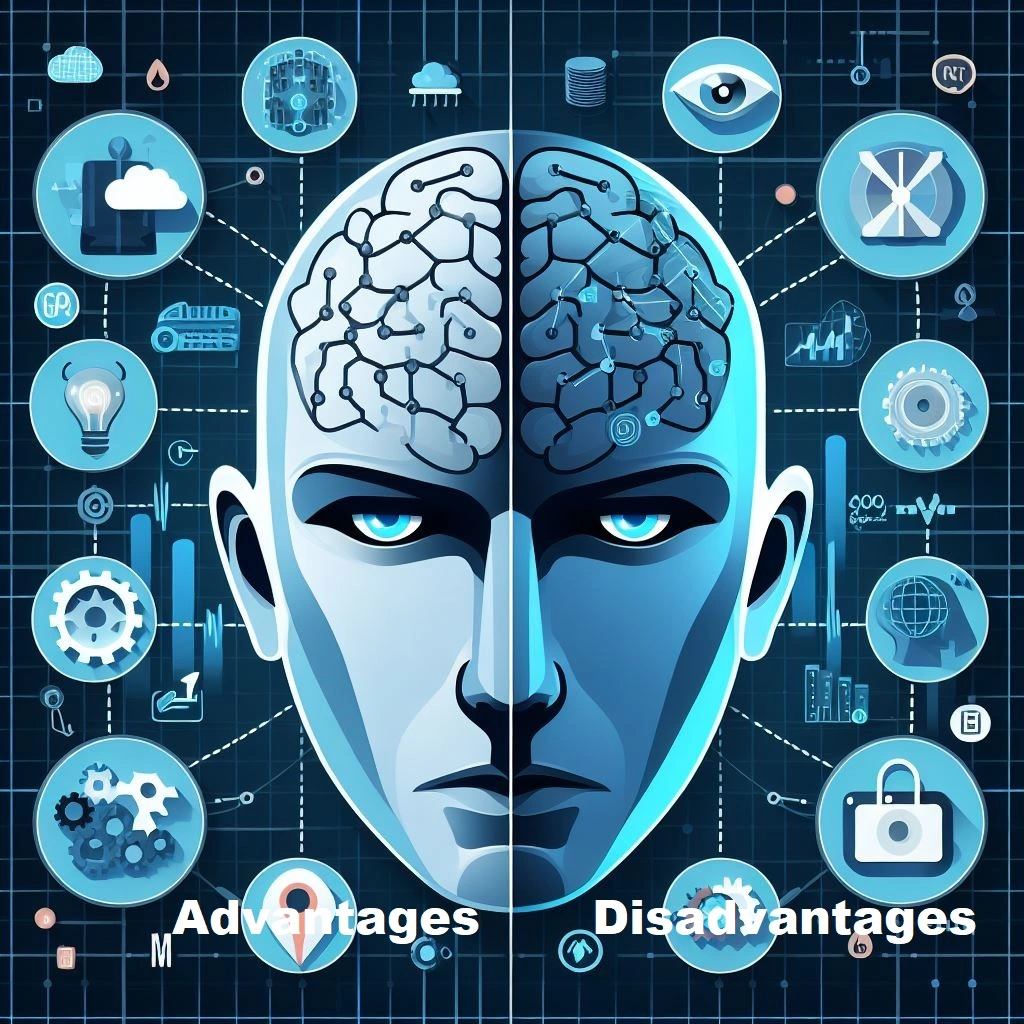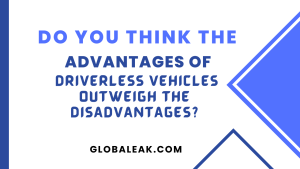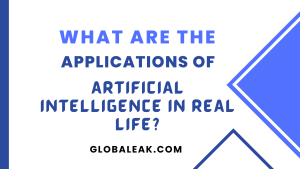Overview:
Amidst all the buzz surrounding Artificial Intelligence – encompassing robots, self-driving cars, and more – it’s easy to overlook its impact on our daily lives. Yet, the truth is, AI touches almost every aspect of our routines. From checking our smartphones upon waking to indulging in another Netflix-recommended movie, AI has seamlessly integrated into our day-to-day experiences. According to a Statista study, the global AI market is projected to grow by up to 54 percent annually. But what exactly is AI? And will it truly benefit humanity in the long run? In this article, we’ll delve into the myriad advantages and disadvantages of Artificial Intelligence. But before we explore its pros and cons, let’s briefly define what AI entails.
What is Artificial Intelligence?
Before delving into the advantages and disadvantages of Artificial Intelligence, let’s first grasp what AI entails. At its core, AI grants computer programs the ability to think and learn autonomously. It essentially simulates human intelligence, thereby empowering machines to perform tasks typically reserved for humans. AI comes in three main forms based on its capabilities:
- Super AI – This theoretical form of AI surpasses human intelligence and is capable of outperforming humans in any task.
- Strong AI – Unlike weak AI, strong AI possesses the ability to understand and learn any intellectual task that a human can. Researchers are actively working towards achieving this level of AI.
- Weak AI – This type of AI focuses on a specific task and operates within defined limitations. It’s commonly encountered in our daily lives.
To better grasp the concept of artificial intelligence and its implications, you can watch the accompanying video, which provides a comprehensive overview of AI and its advantages and disadvantages.
Advantages and Disadvantages of Artificial Intelligence
An artificial intelligence program refers to a software capable of learning and reasoning. Essentially, anything can be deemed artificial intelligence if it involves a program executing a task typically associated with human cognition.
Although artificial intelligence offers numerous benefits, it also presents certain drawbacks. The advantages encompass efficiency via task automation, data analysis facilitating informed decision-making, support in medical diagnostics, and the progression of autonomous vehicle technology. Conversely, the disadvantages entail potential job displacement, ethical dilemmas concerning bias and privacy, security vulnerabilities from hacking, and a deficiency in human-like creativity and empathy.
Let’s commence by examining the merits of artificial intelligence.
Benefits of Artificial Intelligence
1. Reduction in Human Error
A significant advantage of Artificial Intelligence lies in its ability to markedly decrease errors, leading to enhanced levels of accuracy and precision. AI operates on the basis of pre-collected data and meticulously designed algorithms, ensuring that decisions are made with minimal margin for error. Through meticulous programming and algorithmic refinement, AI holds the promise of virtually eliminating errors altogether, thereby bolstering its reliability and efficacy in various applications.
Example:
An exemplary demonstration of the reduction in human error facilitated by AI is evident in the utilization of robotic surgery systems. These systems are adept at executing intricate procedures with remarkable precision and accuracy, thereby mitigating the risk of human error and enhancing patient safety within the healthcare sector. Through the seamless integration of advanced technologies and algorithms, robotic surgery systems exemplify how AI can revolutionize medical practices, ultimately leading to better outcomes for patients.
2. Zero Risks
Another significant advantage of AI is the capability for humans to delegate risky tasks to AI robots, thereby mitigating potential dangers. Tasks such as bomb disposal, space exploration, and deep-sea exploration can be safely undertaken by machines with metallic bodies, which inherently possess resistance to adverse conditions. Furthermore, these AI-driven machines can execute tasks with exceptional accuracy and heightened responsibility, without succumbing to fatigue or wear and tear as humans might. This not only enhances operational efficiency but also ensures the safety of human operators in hazardous environments.
Example:
A prime example of mitigating risks through AI is evident in a fully automated production line within a manufacturing facility. In such setups, robots undertake all tasks, completely eliminating the potential for human error and injury in hazardous environments. This not only enhances operational efficiency but also ensures the safety of human workers by removing them from potentially dangerous situations.
3. 24×7 Availability
Numerous studies indicate that humans are typically productive for only about 3 to 4 hours per day. Additionally, humans require breaks and time off to maintain a balance between their work and personal lives. In contrast, AI exhibits the capability to work tirelessly without the need for breaks. AI processes information at a much faster rate than humans and can concurrently execute multiple tasks with precision. Moreover, AI algorithms enable machines to effortlessly handle tedious and repetitive tasks, further enhancing productivity and efficiency in various domains.
Example:
An illustrative example of this phenomenon is found in online customer support chatbots. These AI-powered assistants offer instant assistance to customers, regardless of time or location. Leveraging AI and natural language processing capabilities, chatbots efficiently address common inquiries, resolve issues, and escalate complex matters to human agents as needed. By seamlessly integrating AI technology, businesses can ensure round-the-clock customer service, enhancing satisfaction and efficiency in the customer support process.
4. Unbiased Decisions
Artificial Intelligence (AI) presents a significant advantage in decision-making due to its impartial nature. Unlike humans, who are often influenced by emotions, AI operates without bias, relying instead on practical and rational algorithms. This absence of emotional influence ensures that decisions made by AI are more accurate and objective. By leveraging AI’s unbiased approach, various industries can enhance decision-making processes, particularly in sensitive areas such as recruitment, finance, and criminal justice.
Example:
An exemplary instance of this phenomenon is found in AI-powered recruitment systems, which evaluate job applicants solely based on their skills and qualifications, disregarding demographic factors. This approach effectively eliminates bias in the hiring process, fostering inclusivity and diversity within the workforce. By leveraging AI algorithms, organizations can ensure fair and objective candidate evaluations, leading to the selection of the most qualified individuals for the job, regardless of background or personal characteristics.
5. Digital Assistance
Some of the most cutting-edge companies leverage digital assistants to engage with users, effectively eliminating the necessity for human personnel. These digital assistants are deployed on many websites to deliver user-requested content. Users can engage in conversational searches with these assistants, discussing their queries as if speaking to another person. In some cases, chatbots are designed so proficiently that it becomes challenging to discern whether one is conversing with a human or a chatbot, blurring the lines between man and machine interaction.
Example:
Indeed, businesses commonly maintain customer service teams tasked with addressing patrons’ doubts and concerns. However, leveraging AI, companies can create chatbots or voice bots capable of fielding all client inquiries. These AI-powered assistants are designed to efficiently handle a wide range of queries, providing prompt and accurate responses to customers, thereby streamlining the customer service process and enhancing overall satisfaction.
6. Daily Applications
In today’s world, our daily routines revolve around mobile devices and the internet, which have become indispensable tools in our lives. We rely on a plethora of apps for various purposes, including navigation with Google Maps, virtual assistants like Alexa, Siri, and Cortana, voice-activated commands such as “OK Google,” capturing moments with selfies, making calls, and managing emails. Additionally, leveraging AI-based techniques, we can effortlessly anticipate today’s weather and forecast for the days ahead. This seamless integration of AI into our daily lives has transformed how we interact with technology, making tasks more convenient and accessible than ever before.
Example:
Two decades ago, planning a trip often involved seeking directions from someone who had prior experience in the destination. However, with the advent of technology, such as Google Maps, the process has been revolutionized. Now, all it takes is a simple query to Google to find out the location of a place like Bangalore. Not only does Google provide the precise location of Bangalore on a map, but it also offers the best route from your current location to Bangalore, all at the tap of a screen or the click of a button. This remarkable advancement in technology has made trip planning more convenient and accessible than ever before.
7. Perform Repetitive Jobs
As part of our daily work routines, we often encounter numerous repetitive tasks, such as inspecting documents for flaws and sending thank-you notes via email. Artificial Intelligence (AI) presents a valuable solution to streamline these mundane chores efficiently. By leveraging AI, we can automate these repetitive tasks, thereby eliminating the need for human intervention in routine and “boring” activities. This automation liberates individuals to allocate their time and energy toward more creative and value-added endeavors, fostering innovation and productivity within the workforce.
Example:
An illustrative example of this concept is observed in the utilization of robots within manufacturing assembly lines. These robots are adept at performing repetitive tasks such as welding, painting, and packaging with exceptional accuracy and speed. By automating these tasks through robotics, manufacturers can significantly reduce costs and enhance operational efficiency. This not only increases productivity but also minimizes errors, leading to improved product quality and overall competitiveness in the market.
8. AI in Risky Situations
One of the primary advantages of artificial intelligence lies in its ability to transcend the limitations and dangers faced by humans. By developing AI robots capable of undertaking perilous tasks on our behalf, we can effectively overcome various hazardous restrictions. Whether it’s venturing to Mars, defusing bombs, exploring the ocean’s depths, or conducting mining operations for resources like coal and oil, AI can be deployed in diverse scenarios, both natural and man-made. This utilization of AI not only enhances safety but also expands the scope of exploration and discovery in challenging environments.
Example:
Indeed, the Chernobyl nuclear disaster serves as a poignant example of the dire consequences faced by humans when dealing with perilous situations such as nuclear emergencies. At the time of the incident, the intense radiation near the core meant that any human intervention would have resulted in immediate peril. Regrettably, there were no AI-powered robots available to assist in mitigating the effects of radiation by controlling the fire during its early stages. This underscores the critical importance of advancing AI technology to develop robotic solutions capable of safely managing such catastrophic events in the future, thereby minimizing human exposure to harm in hazardous environments.
9. Medical Applications
Absolutely, AI has made profound strides in the realm of medicine, offering a multitude of applications spanning from diagnosis and treatment to drug discovery and clinical trials. By harnessing the power of AI, medical professionals and researchers can analyze vast amounts of patient data, pinpoint potential health risks, and tailor personalized treatment regimens. This not only enhances health outcomes for patients but also accelerates the advancement of new medical treatments and technologies. The integration of AI in medicine holds immense promise for revolutionizing healthcare delivery and improving overall patient care.
Example:
One example of medical application of AI is the use of AI algorithms to analyze medical imaging scans, such as X-rays, MRIs, and CT scans, to assist doctors in detecting abnormalities and diagnosing diseases more accurately and efficiently.
As we delve into the advantages of Artificial Intelligence, let us now turn our attention to examining the notable disadvantages that are inherent in this transformative technology.
Disadvantages of Artificial Intelligence
1. High Costs
The endeavor to develop a machine capable of simulating human intelligence is a formidable undertaking. It demands a substantial investment of both time and resources, often entailing considerable financial expenses. Additionally, to remain relevant and effective, Artificial Intelligence (AI) necessitates access to state-of-the-art hardware and software, which further contributes to its substantial costs.
2. Unemployment
An application of artificial intelligence that has garnered attention is the deployment of robots, a development that has led to concerns about job displacement and rising unemployment in certain scenarios. Critics argue that the proliferation of chatbots and robots could potentially lead to job losses, perpetuating the risk of unemployment. For example, in technologically advanced nations like Japan, robots are increasingly utilized to supplant human labor in manufacturing industries. However, it is essential to note that this phenomenon is not universal and varies across contexts. While automation may indeed replace certain human roles to enhance efficiency, it also creates new opportunities for human employment in other areas. Thus, while AI-driven automation may disrupt traditional employment patterns, it simultaneously presents avenues for humans to adapt and engage in novel roles within evolving industries.
3. No Creativity
One significant drawback of AI is its inability to think outside the box. While AI can learn and adapt over time based on pre-existing data and past experiences, it lacks the capacity for creative thinking. A prime example is the bot Quill, which can autonomously generate Forbes earning reports. However, these reports are solely based on data and facts provided to the bot, lacking the nuanced human touch found in other Forbes articles. Despite its impressive ability to generate content independently, AI-driven output often falls short in capturing the creativity and ingenuity characteristic of human-authored works.
4. No Ethics
Ethics and morality represent fundamental human attributes that pose challenges when attempting to integrate them into Artificial Intelligence (AI). The rapid advancement of AI has sparked numerous concerns, including the fear that AI may eventually surpass human control and lead to catastrophic outcomes, a scenario often referred to as the AI singularity. In this hypothetical event, AI would reach a level of intelligence surpassing that of humans, potentially resulting in unforeseen and uncontrollable consequences, including the possibility of AI posing existential threats to humanity. As AI continues to evolve, it is imperative to address these ethical and existential concerns to ensure the responsible development and deployment of AI technologies.
5. Emotionless
From our earliest years, we are taught that computers and machines lack emotions. Humans, on the other hand, thrive on teamwork, recognizing the importance of effective team management in achieving collective goals. While robots may indeed outperform humans in certain tasks, it remains undeniable that the human connections and interpersonal relationships that underpin teamwork cannot be replicated by computers alone. While AI and automation may excel in efficiency and productivity, they cannot replace the nuanced dynamics and emotional intelligence inherent in human collaboration. Thus, while leveraging technology can enhance performance, fostering human connections remains indispensable for achieving shared objectives and fostering a sense of unity and camaraderie within teams.
6. Make Humans Lazy
AI applications streamline and automate numerous tedious and repetitive tasks, reducing the need for humans to memorize information or engage in problem-solving activities. Consequently, there is a tendency for individuals to rely less on their cognitive abilities over time. This over-reliance on AI can potentially lead to detrimental consequences for future generations, as it may diminish critical thinking skills and foster a dependency on technology for decision-making and problem-solving. Thus, while AI offers unparalleled convenience and efficiency, it is crucial to strike a balance and ensure that future generations cultivate and maintain essential cognitive abilities to navigate an increasingly AI-driven world.
7. No Improvement
Humans face limitations in developing artificial intelligence due to its reliance on pre-loaded facts and experiences. While AI excels at executing repetitive tasks, adjustments or improvements necessitate manual alterations to the underlying code. Unlike human intelligence, AI cannot adapt dynamically to new situations or contexts. However, it possesses the capability to store vast amounts of data. Machines are restricted to completing tasks for which they have been specifically programmed. When tasked with unfamiliar or unprogrammed activities, machines often fail to perform adequately, yielding irrelevant or erroneous outcomes with potentially adverse consequences. Consequently, conventional approaches to problem-solving are insufficient in harnessing the full potential of AI.
Advantages and Disadvantages of AI in Different Sectors and Industries
Advantages & Disadvantages of AI | Advantages of AI | Disadvantages of AI |
AI in Marketing | Enhancing the precision and customization of marketing campaigns is a notable advantage of AI. AI algorithms efficiently analyze extensive customer data, encompassing demographics, preferences, online activity, and purchasing patterns. This data is utilized to segment audiences and deploy highly focused and personalized marketing communications. Through AI integration, marketers can refine campaigns to cater to distinct customer segments, amplifying the pertinence and impact of their marketing endeavors. Such targeted strategies often yield enhanced conversion rates, heightened customer contentment, and augmented return on investment (ROI) for marketing initiatives. | One disadvantage of AI in marketing pertains to the potential absence of human warmth and ingenuity. While AI excels at automating diverse marketing functions and deriving insights from data, it may encounter challenges in replicating the distinct human facets of marketing, such as emotional resonance, intuition, and imaginative prowess. AI algorithms often rely solely on data and predefined patterns, potentially overlooking unconventional or inventive marketing strategies that necessitate human creativity and intuition. |
AI in Healthcare | The capacity to improve diagnosis and treatment represents a significant advantage of AI in healthcare. AI algorithms possess the capability to analyze extensive medical datasets, encompassing patient records, laboratory findings, and medical imaging, thereby aiding healthcare practitioners in rendering precise and timely diagnoses. By discerning patterns and anomalies that might elude human clinicians, AI facilitates earlier disease detection and enhances treatment efficacy, ultimately culminating in improved patient outcomes. | An inherent drawback of AI in healthcare revolves around the possibility of ethical and privacy issues arising. AI systems utilized in healthcare heavily depend on patient data, encompassing sensitive medical details. It is imperative to ensure the secure collection, storage, and utilization of this data, prioritizing privacy and confidentiality. Safeguarding patient privacy, preserving data integrity, and mitigating the risk of unauthorized access to personal health information emerge as paramount concerns in the realm of AI-driven healthcare. |
AI in Creativity | An advantage of AI in fostering creativity lies in its capacity to enhance human ingenuity and open up fresh channels for artistic expression. AI technologies, including generative models and machine learning algorithms, offer valuable support to artists, musicians, and writers by facilitating the generation of innovative concepts, the exploration of novel artistic techniques, and the expansion of conventional creative methodologies. By leveraging AI, creatives can delve into uncharted territories, experiment with diverse artistic styles, and push the boundaries of traditional creative practices. | One drawback of AI in creativity revolves around the potential absence of originality and authenticity in AI-generated creative endeavors. Despite AI systems’ ability to replicate existing styles and patterns, there persists a contentious discourse regarding AI’s capacity to genuinely embody creativity akin to humans. AI-generated works may falter in capturing the depth, emotional resonance, and distinctive perspectives that stem from human experiences and emotions. Consequently, there remains skepticism surrounding the authenticity and soulfulness of creative outputs generated by AI. |
AI in Education | The capacity to deliver personalized learning experiences stands as a notable advantage of AI in education. AI-powered systems possess the capability to scrutinize extensive datasets encompassing student performance metrics, preferences, and learning methodologies. Leveraging this data, AI can generate customized educational materials and adaptive learning trajectories tailored to individual students. This personalized approach enables students to progress at their own pace, concentrate on areas necessitating additional assistance, and interact with content that resonates with their interests and needs. | One drawback of AI in education revolves around the possibility of ethical and privacy issues emerging. AI systems utilized in education amass and scrutinize substantial volumes of data pertaining to students, encompassing their academic performance, behavioral patterns, and personal information. It is imperative to ensure that the handling of this data adheres to stringent security measures and incorporates robust privacy safeguards. Protecting student privacy, preserving data integrity, and mitigating the risk of unauthorized access to sensitive information emerge as critical considerations in the realm of AI-driven education. |
AI in Transportation | An advantage of AI in transportation lies in its potential to elevate safety and efficiency across roadways and diverse modes of transport. AI-powered systems harness real-time data gleaned from sensors, cameras, and other sources to swiftly process information and make informed decisions. This capability facilitates the implementation of features such as advanced driver assistance systems (ADAS) and autonomous vehicles, which contribute to mitigating human error and minimizing accidents. Additionally, AI aids in optimizing traffic flow, refining route planning, and enabling predictive maintenance of vehicles, thereby fostering more streamlined transportation networks and alleviating congestion. | One disadvantage of AI in transportation pertains to the ethical and legal quandaries it introduces. Autonomous vehicles, for instance, pose inquiries regarding liability in accident scenarios. Establishing accountability when an AI-operated vehicle is implicated in a collision can be intricate. Moreover, decisions executed by AI systems, such as those concerning traffic regulation or accident evasion, may necessitate contemplation of ethical considerations like resource allocation or prioritizing passenger safety over pedestrian well-being. Striking a balance amid these ethical dilemmas and formulating suitable regulations and protocols for AI in transportation constitutes a multifaceted and evolving challenge. |
AI in Information Technology (IT) | In the IT industry, Artificial Intelligence (AI) offers several advantages and disadvantages. On the positive side, AI enhances cybersecurity by analyzing large datasets to detect and mitigate threats effectively. It automates routine tasks like system monitoring and software updates, improving operational efficiency and reducing manual workload. Additionally, AI-powered chatbots and virtual assistants provide real-time customer support, enhancing overall customer satisfaction. AI also enables predictive analytics, allowing IT professionals to anticipate system failures and perform proactive maintenance. Moreover, AI streamlines software development processes by automating coding tasks and optimizing algorithms, accelerating the software development lifecycle. | Among many disadvantages, job displacement is a major concern, as automation may lead to the loss of jobs for IT professionals involved in manual tasks, necessitating reskilling or upskilling efforts. There’s also the risk of overreliance on AI, potentially reducing human oversight and decision-making in IT operations, which could increase vulnerability to AI failures or errors. Privacy concerns arise due to AI’s analysis of large datasets, raising questions about the security and confidentiality of sensitive information. Bias in decision-making is another issue, as AI algorithms may inherit biases from the data they’re trained on, leading to biased outcomes in processes like hiring or resource allocation. Finally, implementing AI solutions in the IT industry requires significant investment in infrastructure, training, and maintenance, which may pose challenges for smaller organizations or startups. |
Conclusion:
In a summary, while Artificial Intelligence (AI) offers significant advantages across various industries such as healthcare, marketing, transportation, and the IT sector, it also presents notable challenges and drawbacks. The ability of AI to enhance efficiency, accuracy, and innovation is undeniable, leading to improved outcomes and experiences for businesses and consumers alike. However, concerns surrounding ethics, privacy, job displacement, bias, and the complexity of implementation underscore the need for careful consideration and responsible integration of AI technologies. Moving forward, addressing these challenges while maximizing the benefits of AI holds the key to harnessing its transformative potential effectively in diverse sectors of the economy.
Read Also:
📍 SEO & Content Strategist | Expert in Current Affairs, History, Geography & Education Blogs | Digital Marketing Specialist
Muhammad Talha Mehmood is a seasoned digital marketing specialist, SEO expert, and content strategist with over six years of experience in creating high-impact, research-driven content. As the driving force behind Globaleak.com, he delivers in-depth articles on current affairs, history, geography, and education, helping readers stay informed with accurate, well-researched insights.
🔹 Expertise & Achievements:
✔ SEO & Content Strategy: Specializes in creating authoritative, high-ranking content that aligns with Google’s EEAT guidelines.
✔ Research & Analysis: Covers historical events, geopolitical trends, and educational topics with in-depth research and expert insights.
✔ Proven Track Record: Has successfully worked with global clients, delivering content that enhances brand trust, audience engagement, and search rankings.
✔ Academic Excellence: Holds an MBA in Marketing from IBA, University of the Punjab, and a B.Com (Hons) from Hailey College of Commerce.
✔ Industry Experience: Started his career with Packages Limited, trained under PITB’s E-Rozgar Program, and later became a Team Leader & Trainer at Emenac Group of Companies.
🚀 Passionate about creating impactful content, Muhammad Talha ensures every article is insightful, engaging, and value-driven.
📧 Email: talhamehmood34@gmail.com
🔗 LinkedIn: linkedin.com/in/talhamehmood-34

![Artificial Intelligence [AI]](https://globaleak.com/wp-content/uploads/2024/03/Artificial-Intelligence-AI.webp)








